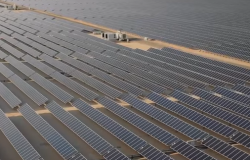5 Lessons from China on How to Drive Sustainable Growth

Journalists, politicians and regular citizens have spent much time in recent years discussing the ‘Chinese dream’. It’s our vision of China’s journey into the future.
I believe the Chinese dream will see us break the link between growing incomes, rising production and degradation of the environment. Our businesses should continue to grow even as our cities, farmland and entire ecosystems become greener and more sustainable.
Long-term wealth creation should go hand-in-hand with sustainability. Earlier this year, Lyu Jun, Chairman of COFCO Corporation, described how the commercial case for sustainable production is lagging behind the moral one. Since his article was published as part of the World Economic Forum 2019 Annual Meeting, we have been actively demonstrating the commercial value of sustainability.
In July, my company partnered with a consortium of 21 banks to engineer a $2.3 billion loan. Under the terms of this loan, we pay a lower interest rate if we can meet a series of annual targets on sustainability. Any interest saved will be re-invested into initiatives that increase our sustainability performance even further. Sustainability earns us money.
This loan demonstrates some of the keys to sustainable growth. Here are five of them:
1) Finance is emerging as a major driver of sustainability.
Government policy and consumer preferences can certainly shift corporate behaviour, as tariffs on soy have shown. And most consumer-facing businesses are adapting to their customers’ preferences for more sustainability.
But I see a more interesting role for the banks, whose influence is immense. The financial sector is shifting quickly towards sustainability as the links to reduced risk and better financial performance become clear. In the first half of this year, the issuance of sustainability-linked loans leapt 63% to $44 billion, as much as in all of 2018. Money talks.
2) Innovation will be part of any solution.
While the public sector has limited funding resources, private investment and capability could play an instrumental role in achieving sustainable agricultural development goals. But current levels are not enough to meet global food security challenges in the long term. Private investors remain reluctant to invest in sustainable agriculture because of the perceived uncertainties and high risks. Furthermore, conventional financing models have their limits, particularly in developing countries where most of the growth in food demand and production will come from.
We need more innovative financing in which public and private sectors can work together, to create the necessary policy and investment environment for private finance in sustainable farming.
We should look at the renewable energy sector for new ideas, where public-private partnerships (PPPs) have successfully delivered mechanisms for pooling public and private financing and risk mitigation.
People may not like change, but they like innovation. People don’t like to give things up, but they like to have new options. Innovation is the answer. It is essential to change.
3) Success depends on collaboration. Bringing people on board is a must.
To identify a solution is much easier than to implement it. In theory, everybody wants a more sustainable food system. But not everybody wants or is able to pay the price. That’s why sustainable change requires us to bring on board all those who are affected. In order to achieve a sustainable food chain, farmers and producers may need further incentives.
China’s sizeable Grain for Green project offered grains, tax and other encouragements so that farmers would protect, instead of clear, their forested slopes.
And agribusinesses will be wise to adopt the same principle. Sustainable farming will only be possible if farmers are on board.
4) China is serious about sustainability.
President Xi has been consistent about the need for green policies “to protect the common home we live in”. His position is also consistent with recent Chinese history, which teaches us that only sustainable agriculture can deliver meaningful food security.
Between 1978 and 2015, China invested a total of $378.5 billion in 16 major sustainability programmes, most of it in the latter 20 years. The investment involved more than 500 million people and far exceeds any other national sustainability programme. On the commercial side of sustainability, China is now at the cutting edge of solar technology, low-carbon transport, the circular economy, carbon trading, and more. We are serious about sustainability.
5) Success requires solutions at scale and China is well-placed to deliver them.
The urgency of our biodiversity and climate crises means that we need to have solutions in place right now. And these solutions need to be at scale.
The sustainability-linked loan mentioned above is not the first in the agricultural trading sector, but it is the largest so far. It demonstrates our intention to join hands with others in our industry and to contribute to sustainable growth in the global agriculture sector. That is part of the Chinese dream.
Johnny Chi Jingtao, Executive Vice-President, COFCO.
This first appeared on the World Economic Forum's Agenda blog.
Image credit - still from video.


